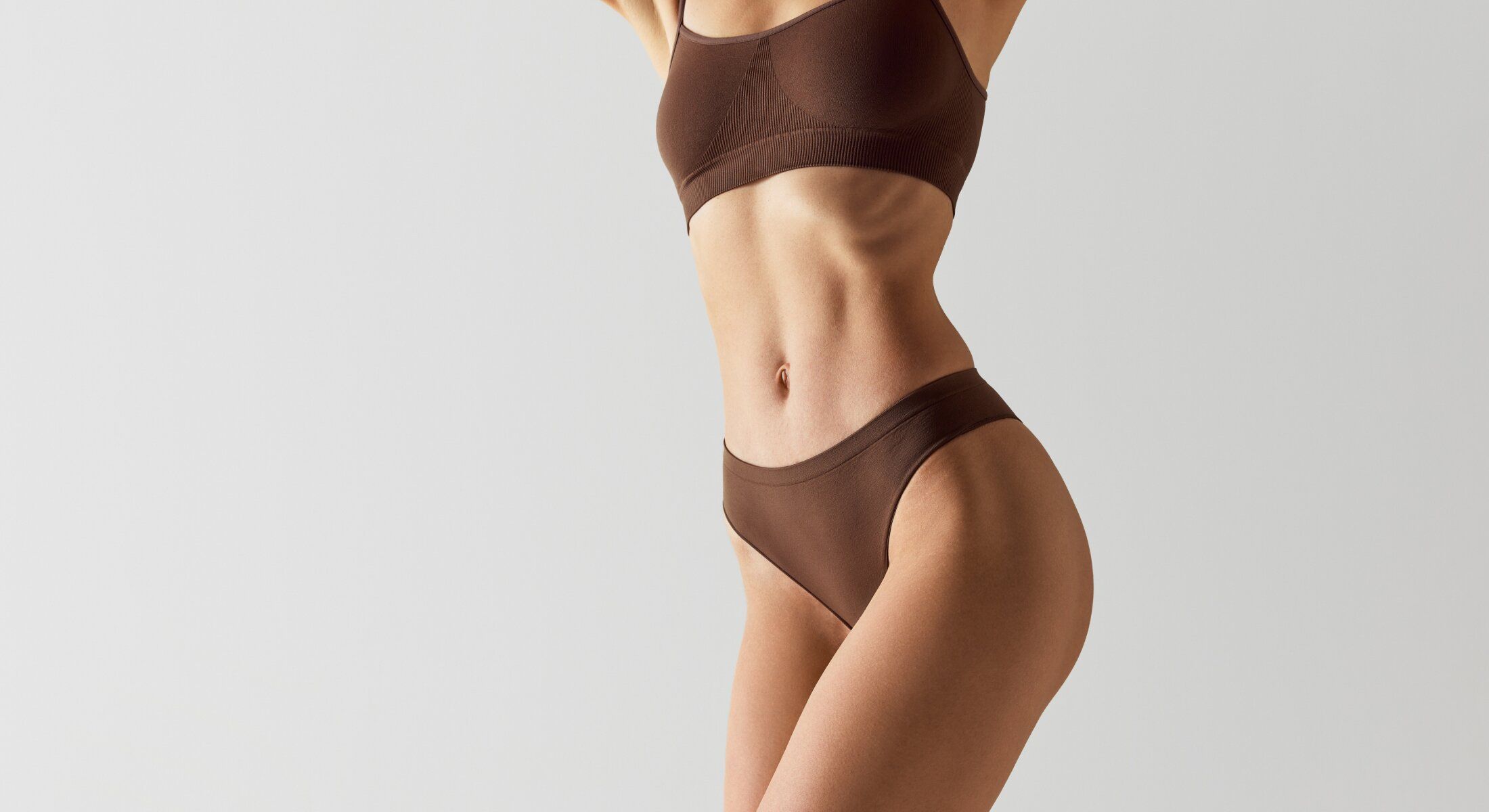

Brazilian Butt Lifts
Brazilian Butt Lift (Buttocks Reshaping)
In the age of JLo and Kim Kardashian, the appearance of a woman’s buttocks is getting more attention than ever. Although some women are seeking larger buttocks, merely adding volume produces a bigger butt, not necessarily a shapelier derrière. The solution: a Brazilian Butt Lift.
Buttocks come in all shapes and sizes. There are several factors that affect the shape of the gluteal region: the curvature of the lower spine, the tilt of the pelvic bone, the size of the waist, the shape and size of the gluteus muscles, and the size of the hips. The prominence and projection of the buttocks is mostly a function of the shape of the lumbar spine and angulation of the pelvis-factors that are beyond the control of the patient or her plastic surgeon. You can improve on Mother Nature though by selectively adding and subtracting fat to make the buttocks appear to project more.
There is agreement among plastic surgeons that the most visually appealing buttocks shape is narrow at the waist and widest at the hips-referred to as the A-shaped buttocks. In order to reshape square buttocks (waist and hips the same size as usually seen in men) or V-shaped buttocks (waist is wider than the hips), fat is removed from where there is excess and added to where it is deficient.
The Brazilian Butt Lift is a popular name for this technique. The fat transfer avoids the higher complication rate found with many buttocks implant procedures. The combination of liposuction and fat grafting intended to reshape the buttocks and is a safer alternative than foreign implants, as it uses the patient's own fat.

Butt Lift Alternatives
Alternatives to buttocks enhancement surgery include wearing padded undergarments or working with a trainer to selectively enlarge the gluteus muscles.
There are, however, limitations on how large the muscles can grow. Some women who desire surgery, but do not have the needed fat to add to the buttocks or hips, may try to gain 10-20 pounds.
There are significant restrictions on sitting after surgery so that the transferred fat can heal where it has been added and not be pushed out of place. Not all fat that is transferred will survive (on average 50-80%). Usually, the results you see by three months after surgery (assuming stable weight) is what you'll maintain.
Before and After Photos
Brazilian Butt Lift





41 year-old female. 5'1" 115 lbs, underwent fat transfer to the buttocks. Fat harvest was performed from arms, abdomen, back, inner thighs, and flanks. A total of 800cc of fat was harvested, and concentrated down to 160 cc being transferred back into her buttocks (80cc per buttock). Lost 2cm in waist, gained 2cm in buttocks, making her buttocks projection appear 4cm greater in total. Note the increased fullness and projection of the buttocks and the slimming of the inner thighs.
*Results may vary and are not guaranteed*



8 Month Follow-up

Patient is 32-year-old woman 5'4" 138 lbs., 1 child delivered by C-section 7 years prior to initial visit. Fat transfer to buttocks: right 300cc, left 250cc. Patient is 1 month post-op in these photos.
Can no longer pull up yoga pants over her buttocks.
*Results may vary and are not guaranteed*



44 year old woman. 5'6", 130 lbs. who had lost 20 lbs. Previously had extended abdominoplasty and liposuction of back and hips. Excisional buttocks lift with Brazilian butt lift performed in conjunction with another plastic surgeon to reduce anesthesia time.
Pre-op measurements: Waist 32.5", Buttocks 35.5"
Post-op measurements: Waist 29", Buttocks 37"
Transferred 126cc of fat to right buttocks, and 170cc to the left.
Difference between waist and buttocks increased by 5 inches. Photos taken 1 year postoperative.
*Results may vary and are not guaranteed*



45 year old woman. 6'1", 185 lbs. Previously had abdominoplasty and liposuction with another surgeon. A total of 1,325cc of fat was harvested, and concentrated down to 570cc being transferred back into her buttocks (270cc on the right, 300cc on the left). Photos taken 6 months postoperative, and patient has lost 20 lbs. since surgery.
*Results may vary and are not guaranteed*


31 year old woman. 5'4", 265 lbs. Had a Brazilian Butt Lift 4 months prior by another surgeon, and was not satisfied. A total of 2,745cc of fat was harvested, and concentrated down to 1,160cc being transferred back into her buttocks (580cc per side). 1 year following BBL, she underwent an abdominoplasty/beltplasty, and the removal of her upper back rolls. A total of 9 lbs. of skin and fat were removed. She has gone from a dress size of 22 to a size 18. She is scheduled to have her additional back rolls removed. Photos taken 2 months after Beltplasty.
*Results may vary and are not guaranteed*



64 year old woman. 5'3", 130 lbs. Previously lost 30 lbs. Excisional buttock lift was performed along with a Brazilian butt lift. A total of 760cc of fat was harvested, and concentrated down to 140cc being transferred back into her buttocks (70cc on each side). Photos taken 6 months postoperative.
*Results may vary and are not guaranteed*



43 year old woman. 5'3", 148 lbs. A total of 1,290cc of fat was harvested, and concentrated down to 430cc being transferred back into her buttocks (290cc on the right, 140cc on the left). Photos taken 6 months postoperative.
*Results may vary and are not guaranteed*



71 year old woman. 5'4", 135 lbs. Had an excisional buttock lift along with a Brazilian buttock lift. Excised 7.5cm of skin. Removed a total of 1,475cc of fat was harvested, and concentrated down to 590cc being transferred back into her buttocks (290cc on the left, 300cc on the right). Photos taken 8 months postoperative.
*Results may vary and are not guaranteed*


